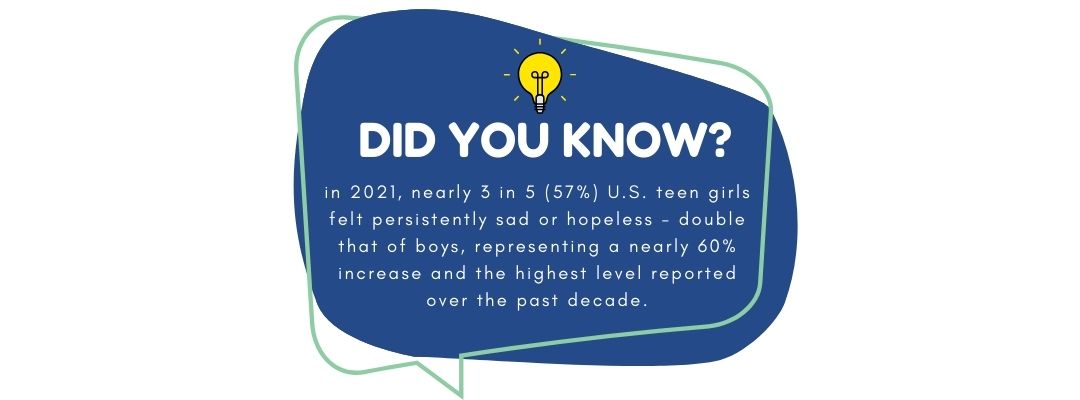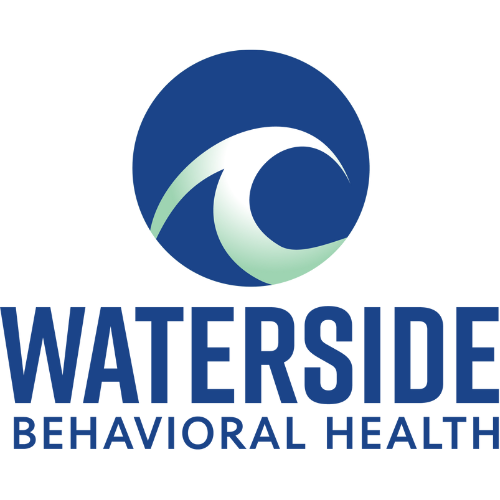How Many Teens Struggle with Mental Health: A Look at the Current Crisis
In this post, we will explore the question how many teens struggle with mental health. Mental health challenges affect many teens today. Nearly 1 in 3 adolescents will experience a mental health disorder by age 18, with anxiety and depression being the most common conditions. About 20% of teens struggle with mental health issues severe enough to impact their daily functioning at school, home, or in social settings.
These statistics reflect real struggles happening in bedrooms, classrooms, and homes across the country. Social media pressure, academic stress, family problems, and biological factors all contribute to teen mental health concerns. Many teens face these challenges silently, afraid to ask for help.
Understanding the scope of teen mental health issues helps parents, educators, and communities recognize warning signs and provide support. Early intervention can make a significant difference in helping teens develop healthy coping skills and resilience.
Prevalence of Mental Health Issues Among Teens
Mental health challenges affect a significant portion of today’s teenage population. Recent studies reveal alarming statistics about the increasing rates of depression, anxiety, and other mental health conditions among adolescents.
Global Statistics and Trends
Recent data from the World Health Organization shows that approximately 1 in 7 adolescents worldwide experiences mental health disorders. This represents about 14% of the global teenage population.
In the United States, the situation is particularly concerning. According to the CDC, about 1 in 5 teens (20%) will experience a severe mental health disorder at some point during their life.
Depression affects nearly 13% of teenagers, while anxiety disorders impact around 32% of adolescents aged 13-18. These numbers have been steadily increasing over the past decade.
The COVID-19 pandemic further escalated these issues. A 2023 survey found that emergency department visits for teen mental health crises increased by 31% compared to pre-pandemic levels.
Factors Contributing to Mental Health Challenges
Several key factors influence the rising prevalence of mental health issues among teenagers. Academic pressure ranks as a primary stressor, with 61% of teens reporting school-related stress as a major concern.
Social media and digital technology exposure correlate strongly with mental health challenges. Teens who spend more than 5 hours daily on electronic devices are 71% more likely to have suicide risk factors.
Family dynamics also play a crucial role. Teens from households with conflict, instability, or poor communication show higher rates of anxiety and depression.
Biological factors cannot be overlooked. Genetic predisposition accounts for approximately 40-50% of vulnerability to conditions like depression and anxiety.
Economic factors create additional strain, as teens from lower-income households face a 2.5 times higher risk of developing mental health issues than their more affluent peers.
 Source: CDC Newsroom
Source: CDC Newsroom
Impact of Mental Health Struggles on Adolescents
Mental health challenges during adolescence can severely disrupt daily functioning and development. These struggles affect teens in multiple areas of life, creating obstacles that may persist into adulthood if left unaddressed.
Effects on Academic Performance
Mental health issues often directly impact a teen’s ability to succeed academically. Students with depression or anxiety typically show decreased concentration and motivation, making it difficult to complete assignments or study effectively.
Research shows that teens with untreated mental health conditions are more likely to:
- Experience a drop in grades
- Have increased absences
- Struggle with homework completion
- Face difficulty retaining information
According to recent studies, high school students with depression are twice as likely to drop out compared to their peers. Learning disabilities frequently co-occur with mental health issues, creating additional challenges.
Teachers may misinterpret symptoms as laziness or disinterest. Many schools lack adequate resources to identify and support struggling students.
Social and Emotional Consequences
Teens with mental health challenges often face significant difficulties in social situations. They may withdraw from friends, family, and activities they once enjoyed.
Peer relationships become particularly complicated. Many teens report feeling:
- Isolated from others (You may be interested in our dedicated post How to Deal with Loneliness)
- Misunderstood by friends
- Unable to communicate their feelings
- Overwhelmed in social settings
The emotional toll can be severe. Adolescents may experience intense mood swings, irritability, and feelings of worthlessness. These emotions can create a cycle that worsens their condition.
Social media adds another layer of complexity. While it can connect teens, it also creates pressure to present a perfect image. This discrepancy between online personas and reality often intensifies feelings of inadequacy.
Risks of Substance Abuse
Mental health struggles significantly increase the likelihood of substance use among adolescents. Many teens turn to alcohol or drugs as a form of self-medication to temporarily escape emotional pain.
This dangerous coping mechanism creates additional problems:
| Substance Use Risk | Impact on Teens |
|---|---|
| Addiction potential | Higher in developing brains |
| Academic consequences | Further decline in performance |
| Legal problems | Criminal records affecting future |
| Health complications | Both immediate and long-term |
Teens with depression are twice as likely to develop substance use disorders compared to their peers. The combination of mental health issues and substance abuse creates a complex situation that’s harder to treat.
Early intervention is crucial. When mental health issues are addressed promptly, the risk of substance abuse decreases substantially.
Support and Treatment Options
Teens facing mental health challenges have several effective options for help. These range from family support systems to professional therapy and various treatment approaches that can be tailored to individual needs.
Family and Community Support
Parents and family members play a crucial role in supporting teens with mental health issues. Open communication creates a safe space where teens feel comfortable sharing their struggles without judgment.
Family education about mental health helps everyone understand what the teen is experiencing. When families learn about specific conditions, they can provide more effective support.
Community resources like school counselors, peer support groups, and youth programs offer additional help. These connections reduce isolation and show teens they’re not alone.
Religious communities and mentorship programs can provide guidance and emotional support. These relationships help teens develop healthy coping skills and resilience.
Professional Counseling and Therapy
Professional mental health treatment begins with proper assessment by qualified providers. Early intervention often leads to better outcomes for teens struggling with mental health.
Types of effective therapy for teens include:
Finding the right therapist requires consideration of specialization, rapport, and treatment approach. Many therapists now offer both in-person and virtual sessions to increase accessibility.
Insurance coverage and community mental health centers make professional help more affordable. Some schools also provide counseling services at no cost to students.
Medication and Holistic Approaches
Medication can be an important treatment option for some teens. Psychiatrists carefully evaluate symptoms and may prescribe medications like antidepressants or anti-anxiety medications when appropriate.
Parents should understand that medication often works best when combined with therapy. Regular monitoring helps manage side effects and evaluate effectiveness.
Holistic approaches that complement traditional treatment include:
- Regular physical exercise
- Healthy sleep habits
- Mindfulness and meditation
- Proper nutrition
Digital resources like mental health apps and online support communities provide additional tools. These options help teens manage symptoms between professional appointments.
Self-care practices tailored to individual interests help teens maintain balance. Activities like art, music, sports, or time in nature can significantly improve mental wellbeing.
Frequently Asked Questions Related to How Many Teens Struggle with Mental Health.
Mental health challenges affect many teenagers worldwide, with several key factors influencing their psychological wellbeing. Understanding these issues helps parents, educators, and healthcare providers offer appropriate support.
What are the primary factors contributing to mental health issues in adolescents?
Social media exposure significantly impacts teen mental health, with studies linking excessive use to increased depression and anxiety. Many teens report feeling inadequate when comparing themselves to others online.
Academic pressure creates substantial stress, as students face expectations for high achievement and college preparation. This pressure often leads to sleep deprivation and burnout.
Family dynamics, including parental conflict, divorce, or lack of support, strongly influence teen mental health. Teens from unstable homes show higher rates of emotional difficulties.
Biological factors like hormonal changes during puberty affect mood regulation and emotional responses. These physical changes can trigger or worsen mental health conditions.
What methods are most effective for supporting teenagers with mental health challenges?
Early intervention through therapy shows the best outcomes for teens. Cognitive-behavioral therapy (CBT) specifically helps teens develop coping skills and healthier thought patterns.
School-based mental health programs reach many students who might not otherwise access care. These programs reduce stigma and make support more accessible.
Maintaining open communication between teens and trusted adults creates a safety net. Teens who feel heard are more likely to seek help when struggling.
Physical exercise and adequate sleep significantly improve mental health outcomes. Regular activity reduces symptoms of anxiety and depression in adolescents.
Which mental health disorders are most frequently diagnosed in young adults?
Anxiety disorders affect 31.9% of adolescents, making them the most common mental health condition in this age group. Social anxiety, generalized anxiety, and panic disorders are particularly prevalent.
Depression impacts approximately 13.3% of teenagers, with rates rising sharply during middle and high school years. Girls experience depression at roughly twice the rate of boys.
Attention-deficit/hyperactivity disorder (ADHD) affects about 9.4% of children and adolescents. Many cases continue into adulthood if not properly addressed.
Eating disorders often emerge during adolescence, with 2.7% of teens experiencing conditions like anorexia, bulimia, or binge eating disorder.
Why is attention to mental health crucial for the younger population?
Early intervention prevents long-term consequences, as untreated mental health issues often worsen over time. Addressing problems during adolescence can prevent decades of suffering.
Mental health directly impacts academic performance and future opportunities. Students struggling with psychological issues show higher dropout rates and lower achievement.
Healthy development of social skills depends on good mental health. Teens with untreated conditions often struggle with relationships throughout life.
The economic cost of untreated youth mental health problems exceeds $300 billion annually in the United States alone through healthcare costs and lost productivity.
At what developmental stage do half of all lifetime mental health conditions typically onset?
Half of all mental health conditions begin by age 14, though many go undiagnosed until adulthood. Early adolescence represents a critical period for mental health intervention.
Brain development during the teenage years makes this period particularly vulnerable to the onset of conditions like schizophrenia, bipolar disorder, and depression.
Early warning signs often appear 2-4 years before full diagnostic criteria are met. These subtle changes in behavior, sleep, or mood provide opportunities for early intervention.
What is the prevalence of significant mental disorders among youth between the ages of 9 and 17?
Approximately 20% of youth ages 9-17 experience a diagnosable mental disorder that causes impairment. This translates to roughly one in five children and adolescents.
An estimated 11% of youth experience “severe impairment” from their mental health conditions. These cases often require intensive treatment and support.
Rates vary significantly by geographic region, socioeconomic status, and access to healthcare. Rural and underserved communities often show higher rates of untreated conditions.
Conclusion: How many teens struggle with mental health
Teen mental health struggles are at an all-time high, with rising rates of anxiety, depression, and hopelessness. Recognizing the signs, reducing stigma, and providing support can make a critical difference in helping teens navigate these challenges.
You’re not alone, and help is always within reach. Contact us today at (774) 619-7750 and take control of your mental health.




